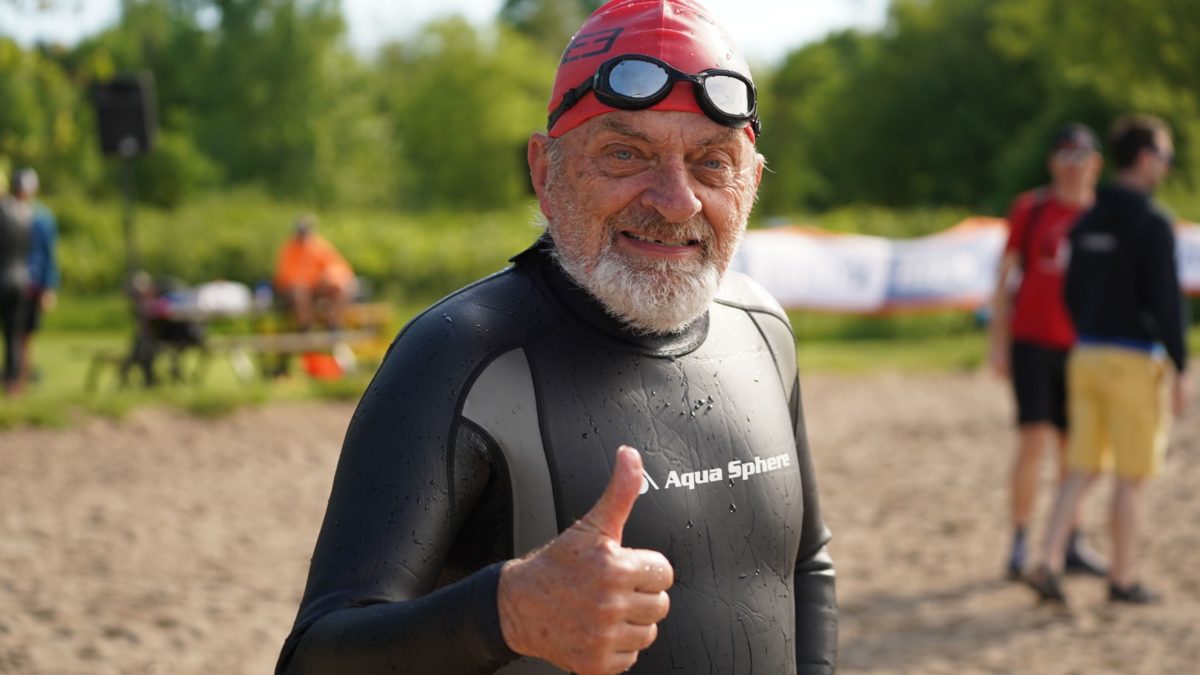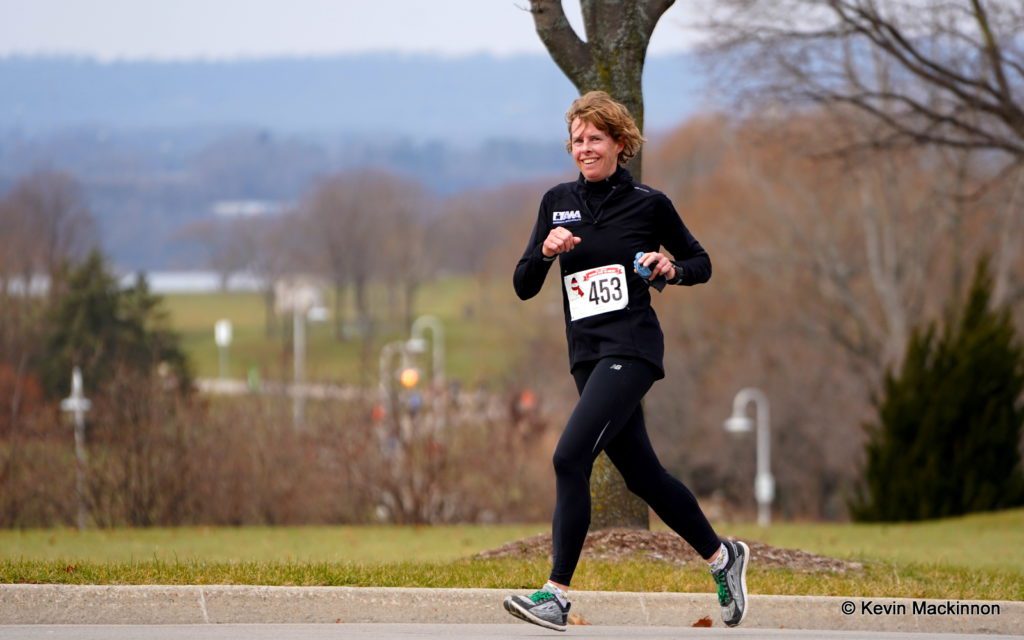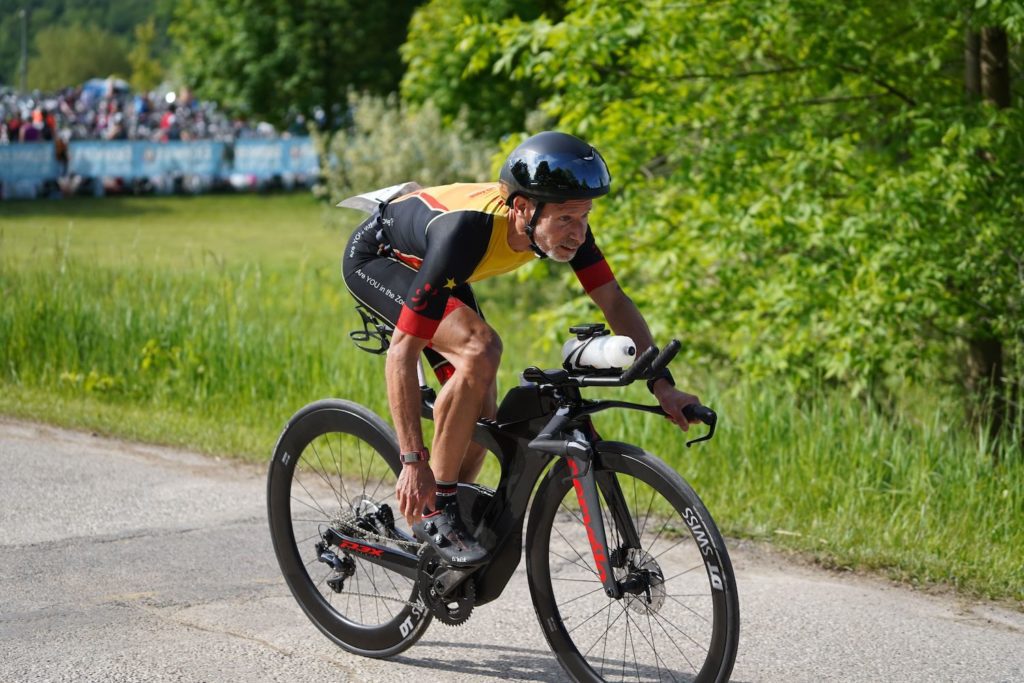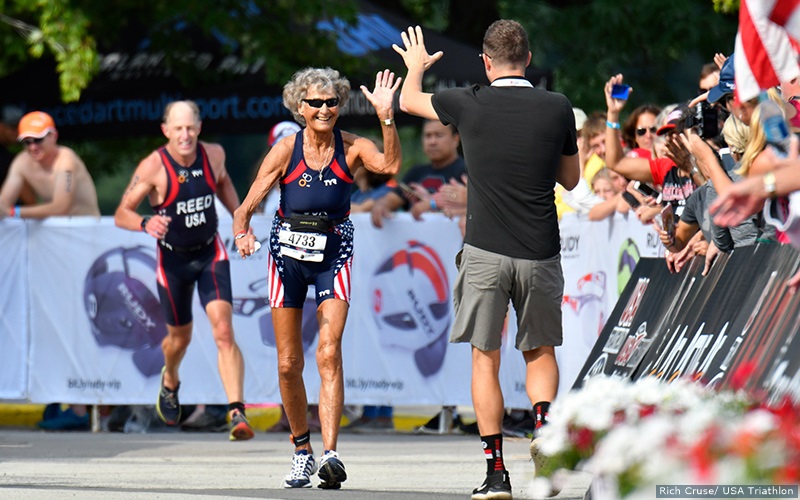The Difference a Decade Makes – the keys to aging gracefully in triathlon
Training tips for triathletes in their 50s, 60s, 70s and beyond
 Photo by:
Kevin Mackinnon
Photo by:
Kevin Mackinnon
Over the years, new age groups have been opened by athletes who just don’t buy into the idea that they are too old for triathlon at 50, 60, 70 or beyond. In fact, many of these triathletes are just getting started in their 50’s and have their eyes fixed on big goals that are many years down the road. They revel in their ability to blast the old school perception of what it means to be a “senior,” literally, out of the water.
Turning the corner on 40 brings with it the first indications that training efforts will get harder to sustain, paces will slow, and recovery time will take a little longer. It happens very gradually, so much that the difference is barely discernable until looking back from beyond 50 and wondering what’s next.
In conversations with ten masters-plus triathletes, they were asked to reflect on how their experience is different from the previous decades. At first, they felt the differences were marginal – and it’s clear that aging isn’t a real concern. In some instances, it proves to be an advantage. Here is some of what they shared.
Related: 7 Keys to effective run training for masters triathletes

Performance
Unless the triathlete got a very late start in the sport, their personal best times are well behind them, but that doesn’t really matter to them. In fact, most of them are working at getting better at their sport and continuing to improve their performance where it counts in the long run. While flying mounts and dismounts may be replaced by stepping over the top tube, they know the seconds saved aren’t relevant compared to the time they can make up on the bike course – and it’s far safer.
A 2014 study conducted to determine what age athletes peak in each leg of a triathlon, and how quickly their speed declines, can help athletes decide when to transition from short course to long course racing. It suggests that endurance athletes enjoy their peak performance between age 35 to 40. However, it also shows that athletic performance doesn’t just drop off the edge of a cliff over the next three or four decades.
It turns out that swim and run times decline sooner than cycling times, so the 50+ athlete could still enjoy gains on the bike. It does become harder to improve once they hit a plateau, but it’s not unusual for 60-year-olds to hang with the younger athletes.
By continuing to train smart, masters plus triathletes are maintaining remarkable abilities and are able to sustain their endurance, though they generally favour the longer distance events. As one athlete put it, “It’s too much work to just show up for an hour.”
Physical
The physical changes of aging are well documented by the medical community and supposedly “solved” by the multitude of anti-aging remedies and aids on the market. While there is no getting away from changes in eyesight, mobility, agility, strength, bone density or issues caused by prostate and menopause, these issues were considered a sidebar to our conversations.
Adaptations for the “little changes” that some athletes reluctantly admit to such as weaker hands, aches and pains that come out of nowhere and leave just as quickly or difficulty seeing their watch are just part of the deal and accepted as such without much drama.
There is, however, increased hesitancy around falling, which comes both from experiencing crashes on the bike and knowing that the outcome is likely to be more severe as the decades progress. “I don’t bounce as well as I used to,” says a late-50’s triathlete who gave up trail riding and trail running after landing too many times, always on the same side.
By continuing to train with an increased focus on maintaining or building strength and mobility, these athletes are staving off the worst of the chronic conditions that typically affect people as they age. (According to a Statistics Canadian Health Survey on Seniors, there are 26 conditions worthy of tracking, ranging from arthritis to incontinence, and everything in between.)

Related: Aging gracefully – 7 Tips to enjoy triathlon in your 50s and beyond
Training & Recovery
From the perspective of a mid-career age group athlete trying to balance career, family, training and sleep, the life of a retired athlete looks pretty appealing. However, the idea that someone in their 60s can train all the time because they have fewer work/life demands is misguided. Our masters plus triathletes have very busy lives that involve caring for family and juggling responsibilities that are different, but can be just as time consuming. The difference might be when in the day these demands are made. Retirement often comes with the benefit of creating one’s own schedule to train when energy is higher.
Most athletes view the decline in their performance over the decades as a reason to train smarter and continue reaching for their best for “this” decade. Sure, foot speed is slower, more recovery time is needed, as are a few more naps. There are still a few nagging injuries to nurse along, but they continue to train for optimal performance with a full training program.
One thing masters-plus athletes agree on wholeheartedly is the need for a coach and a club or training partners. As younger athletes, a prescriptive program from a book or joining a run group was as official as it got. Now they rely on the expertise of a coach who can build a training program suitable for their goals and progress. Their training programs and workouts might look the same as a younger athlete’s, but expectations for pace and intensity are realistic for their abilities and adjusted to include more recovery time, when necessary.
Taking care of soft tissue and joints is taken seriously and these athletes have learned to respect the process of rehab and recovery. Even more importantly, they put consistent effort into prevention through regular (daily) strength and stretch routines. Their injuries are less often from over-use because their training programs tend to be more consistent and stable. As younger athletes, the tendency to train through the niggles resulted in injuries. Now they are addressed quickly to allow for healing before things get chronic.
That said, surprise injuries still crop up for no apparent reason – and that’s just part of the deal. “Sometimes I feel things just getting out of bed in my back or ankles that weren’t there the day before,” complains one late 50-year-old. “No reason – I just have to get moving again.”

Technology and Gear
Boomers are often the brunt of jokes when it comes to adopting technology, but masters triathletes are definitely an exception. They may need some additional support to get their Training Peaks workouts into a Zwift group ride while on Zoom, but once there – they become advocates for the training effect and the social benefits. Especially during COVID lockdowns.
With the increased number of triathletes in the masters plus age groups, gear has adapted to suit their needs. Bifocal sunglasses, bigger screens on bike computers, hydraulic brakes and bikes that offer softer rides have become part of the regular inventory in the retail environment. Bike set ups might include variations on hydration systems as bike bottles become harder to grip with arthritic thumbs. Fortunately, many of these masters plus triathletes have the motivation and the means to try out new set ups and upgrades.
“We used to see guys come in during their mid-life crisis to buy the upgraded bikes. Now its athletes in their 50’s and 60’s buying them, because they use them,” observes one 60-year-old triathlete with over ten years of retail experience. “However, now they’re more honest about getting a comfortable bike fit because they have better self-awareness and know comfort equals speed.”
Mental Fitness and Lifestyle
Perhaps most significant for the masters-plus athletes is the mental wellness and lifestyle benefits of staying in triathlon, and this may be where the biggest difference shows up. While younger athletes value the same benefits, the masters-plus athletes have different reasons.
Staying physically active and engaged has the added benefit of slowing the aging process and staving off the potential for dementia, depression and other mental health challenges, which are exacerbated by social isolation. Getting out and being social is a big part of why these triathletes are staying in the game. Competing and doing well isn’t as important as meeting people and maintaining their identity as an athlete.
As one triathlete put it, “If I stopped doing it, my whole life would be boring.” Another in his later 60s put it another way; “You can have goals and get focused, or let time slip away.” A similar sentiment is echoed by a mid-50s lawyer still in the workforce. “Training keeps me sane – it takes my mind off working from home and the lockdown by giving me defined goals to work towards.”
Post retirement, when time is unscheduled and the opportunities to meet people have to be created, participating in triathlon gives older athletes fresh purpose and an expanded social life. Not only that, being around younger athletes is motivational and provides a challenge.
Related: Getting older in triathlon

Motivation, New Experiences, Friendship and Fun
The notion of being the “youngster” in the next age category is just as compelling at 60 as it is for athletes in their 30s and 40s. The prospect of turning 70 has one triathlete, who has been on the podium at Kona already, thinking about giving it another go. “It’s easier when you’re the young one in the age group,” she says. In spite of having “been there, done that,” she is motivated by the prospect of having her daughter join her this time. Her only hesitation? The timing doesn’t work well with a side trip to Japan to run the Tokyo marathon, the last of the world majors she has yet to run. Not your average Grandmother’s dilemma.
Another triathlete about to age-up has his eyes on setting a new world record and has the patience and discipline to train for it over the next few years. He enjoys the challenge of training with younger triathletes, who push him to continue reaching higher. Plus, it’s more fun.
It’s not always about glory, however. Some are happy to continue going at their own pace simply to stay in the game and enjoy the sport that they love for the sake of their longevity and quality of life. “I’ve given up on the idea of speed – it doesn’t mean as much to me anymore. I’m happy to try new experiences now like trail running, where I can push myself at my own pace,” shares one athlete who ran her first marathon on a challenge, qualified for Boston, so “had” to keep going.
While many seniors enjoying travelling after retirement, most of these triathletes were more interested in combining their sport with travel and friends on “tri-cations.” Their motivation to train is partially driven by the prospect of travelling to training camp or a race and having opportunities to meet new people. The positive social “hits” of being with like-minded people in a supportive environment is hard to ignore, which explains the enthusiasm of the volunteers and spectators as well as the competitors in older age groups.
“This doesn’t pay me at the end of the month, so I can enjoy the training, travelling and racing. I’m not sure the pros have so much fun – they need to perform,” observes a late-starter who is in full swing in her late 60s and making the most of her experiences.
The differences between the decades are overwhelmingly outweighed by the similarities, which should put any triathlete approaching the 50-year mark at ease. Having an enhanced purpose in life, challenging yourself to stay fit and healthy, meeting new people and staying socially engaged, while seeing the world with friends. It doesn’t get much better than that, at any age!
Sandie Orlando is a frequent contributor to Triathlon Magazine Canada, an age group triathlete, coach, writer and marketing/communications manager for CL Performance Training.
